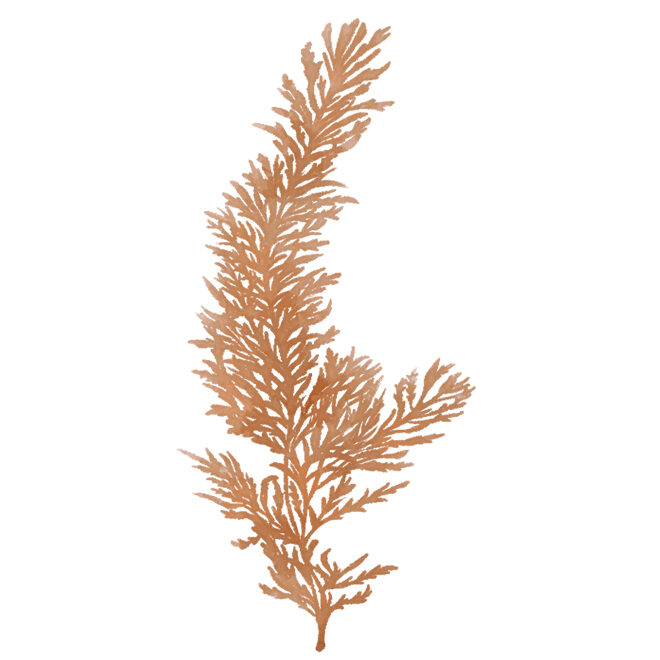Basic information of Seaweed

Akamoku, a type of seaweed belonging to the order Dictyotales and family Sargassaceae, is a brown algae found along the coastlines of Japan, from Kyushu to Hokkaido, particularly inhabiting the intertidal zone. In regions like Tohoku and along the Japan Sea coast, it goes by various names such as Gibasa (Akita, Ishikawa), Ginbasou (Yamagata), Nagamo (Niigata), Nagaramo (Toyama), and Hanamatsumo (Noto Peninsula). Akamoku is characterized by its strong viscosity when chopped and heated.
In addition to dietary fiber and minerals such as calcium, it also contains a significant amount of a red-orange pigment called fucoxanthin. Fucoxanthin is known to have effects in suppressing obesity and improving the pathophysiology of type II diabetes.
| Per 100g | Energy kcal |
Protein g |
Fat g |
Carbohydrates g |
Dietary Fiber g |
Salt Equivalent g |
|---|---|---|---|---|---|---|
| Akamoku (raw) |
127 | 15.6 | 1.0 | 52.1 | 38.3 | – |
The seaweed Akamoku, once dubbed as “obstructive seaweed” or “nuisance seaweed” due to its tendency to get tangled in fishing boat propellers, has gained attention in recent years as a “superfood from the sea” after the discovery of its various beneficial nutrients.
March to May